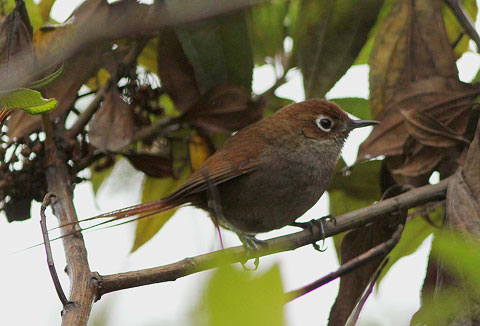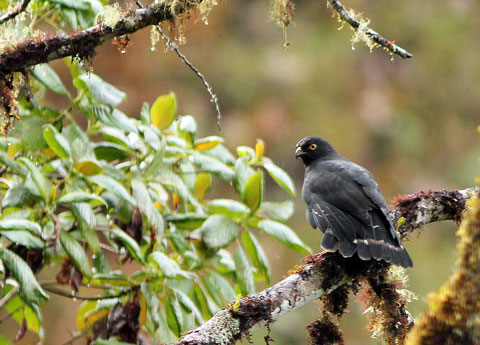From the Field
July 25: Steve Howell and Jon Feenstra report on their scouting of a new lodge in Amazonian Ecuador - Part 5
The overnight rain continued through our walk to the canopy tower (below), but then abated after 30 minutes atop the 207-step tower, and the forest came alive. Highlights of the morning included the stunning and “rarely seen-this-well” Yellow-throated Woodpecker (below), a nicely perched Spix’s Guan, three species of macaws, and a swarming kettle of over a hundred White-chinned Swifts (below), a little-known species not previously reported from the region and rarely ever photographed! After lunch and a siesta we simply paddled around the lagoon and creeks in front of the lodge, with beautiful light and much to see, from flashy Red-capped Cardinals to very confiding Squirrel Monkeys attended by a group of Greater Anis that fed on insects flushed by the monkeys (below!), a turtle hosting a butterfly (below), almost 50 toucans in total (a Channel-billed Toucan below), several Blue-throated Piping Guans, and superb views of Sungrebe and a cryptic (vocally very distinct but not-yet-split) species of Least Bittern – there are too many birds here!

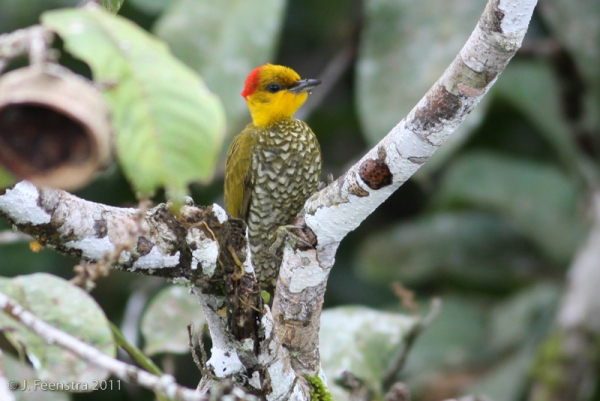
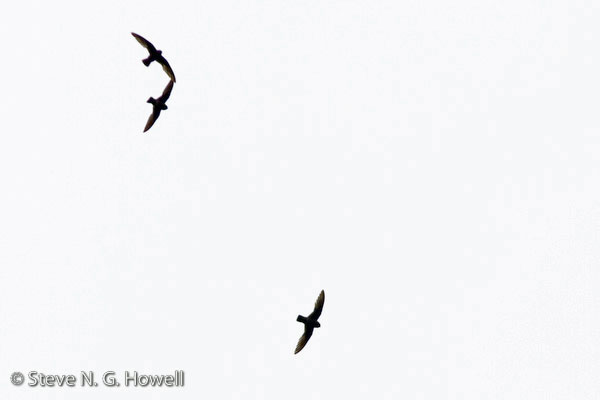
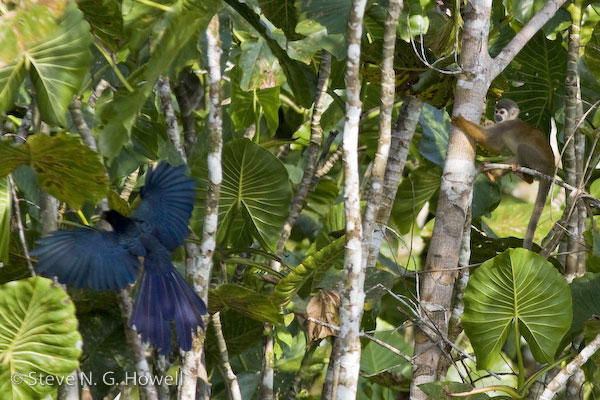
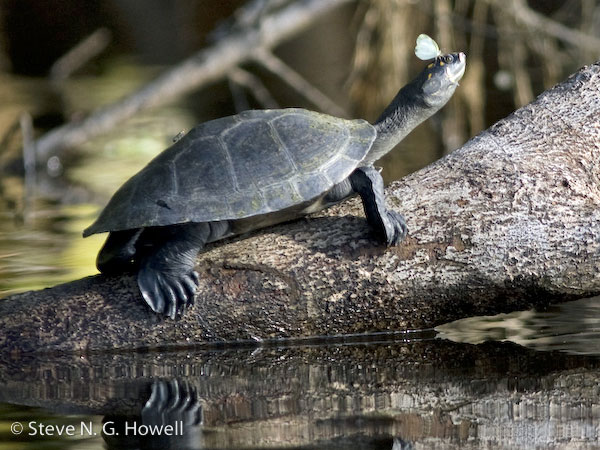
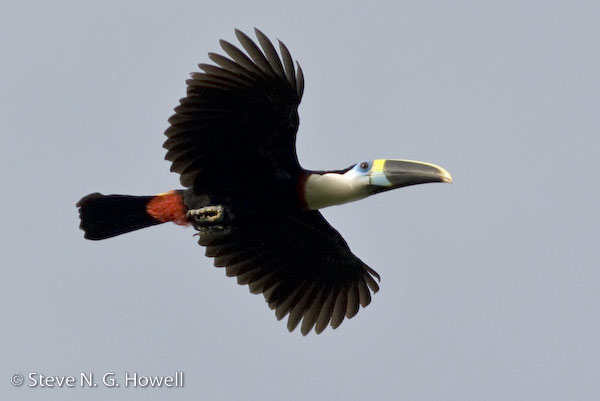

July 25: Rich Hoyer from his Snowcaps to Seaturtles tour of Costa Rica
We've just finished our two full days in Tortuguero National Park and are on our way to the newish Maquenque Ecolodge to the north. Tortuguero was good to us, though we could have done with a little less rain – or perhaps timed better during our siesta or at night, rather than during most of the two mornings. But we still had great birds, especially on yesterday afternoon's boat ride, which netted us Gray-headed Kite, Semiplumbeous Hawk, Green-and-rufous Kingfisher, and American Pygmy Kingfisher. Today we started with another boat ride (the showers mostly held off, thankfully) with several highlights including a Snowy Cotinga and a singing Bare-throated Tiger-Heron (see below) and ended with a very casual walk around the lodge grounds where we had extended views of a Plain-brown Woodcreeper (see below) first chasing a Streak-headed Woodcreeper out of the area then alighting on a palm trunk over our heads, and proceeding to enter a cavity and poke its head out for several minutes. If that weren't enough of a day's finale, we walked down the path from our rooms after dinner and brought in a fancy Crested Owl overhead for great views. I shouldn't forget to mention that we did see three Green Sea Turtles on our guided walk to the heavily patrolled nesting beaches last night. We didn't get to watch one actually lay eggs, but that's never a sure thing, and it was a treat to see one at all.
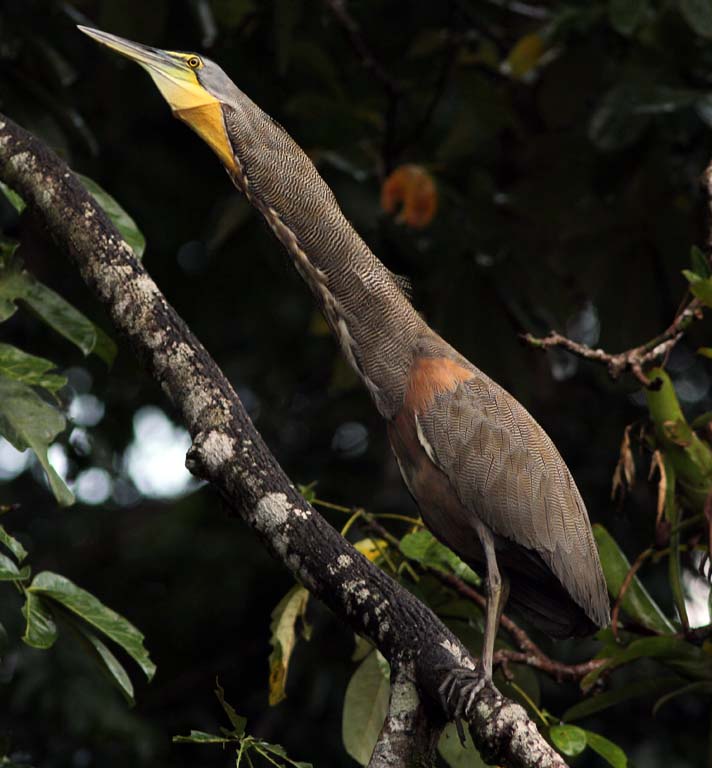
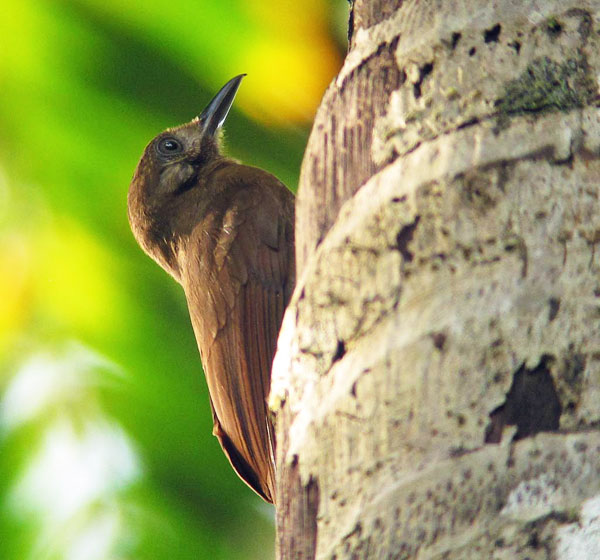
July 24: Steve Howell and Jon Feenstra report on their scouting of a new lodge in Amazonian Ecuador - Part 4
They call it rainforest for a reason, and after four days blessed with amazing dry weather, this afternoon the heavens opened – an impressive spectacle to watch, and hear, the roaring curtain of rain advance over the forest canopy (below) to engulf our world. I’d rather as much hadn’t come down the back of my shirt, but that could be just viewed as a personal touch from the weather gods. The day started dry, with “the usual” flocks of toucans and guans commuting to fruiting trees along the river, then a trio of Giant River Otters (below) snorted and hissed at us as we passed through their territory, and a beautiful White Hawk (below) perched overhead. After 20 species of antbirds yesterday, today produced “only” 17 species, but these included the stunning White-plumed Antbird and the elusive Reddish-winged Bare-eye. While laying in hammocks after lunch as the rain eased off, our tenth species of monkey appeared – the adorable Golden-mantled Tamarin, two of which scolded us from a nearby vine tangle. In late afternoon we visited a couple of river islands, home to their own distinctive suite of birds, including Black-and-white Antbird and three species of spinetails, including the handsome (but still elusive – it is a spinetail,. after all) White-bellied (below). Now time for a cold beer and dinner.
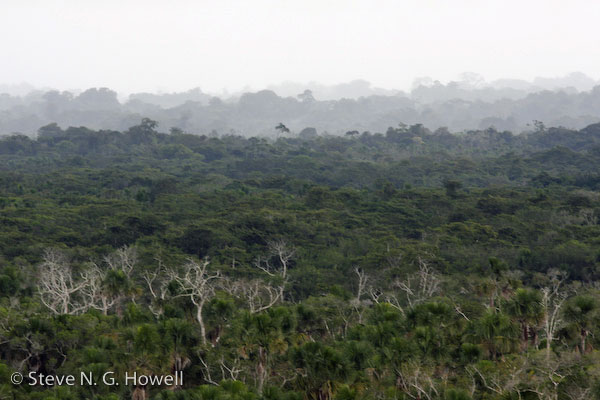
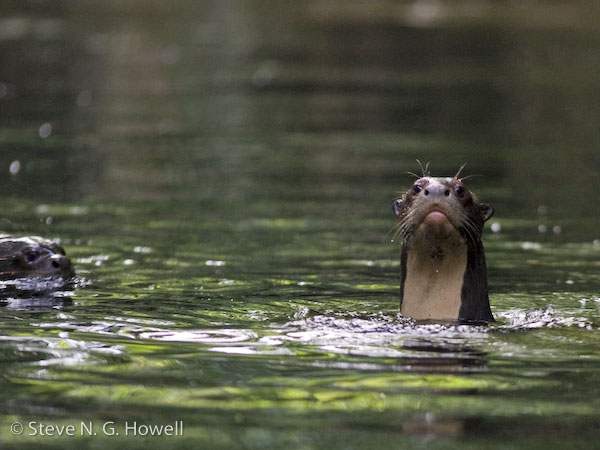
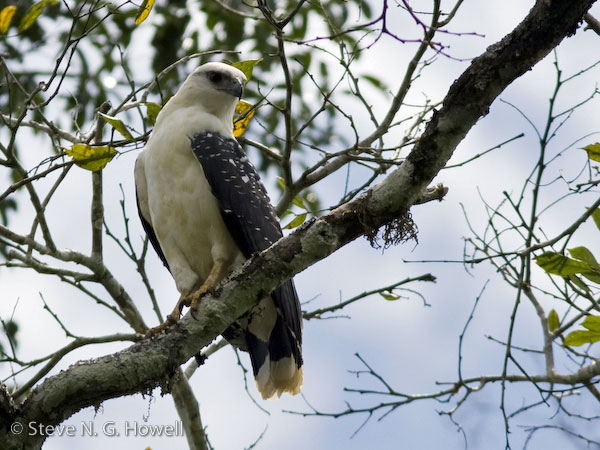
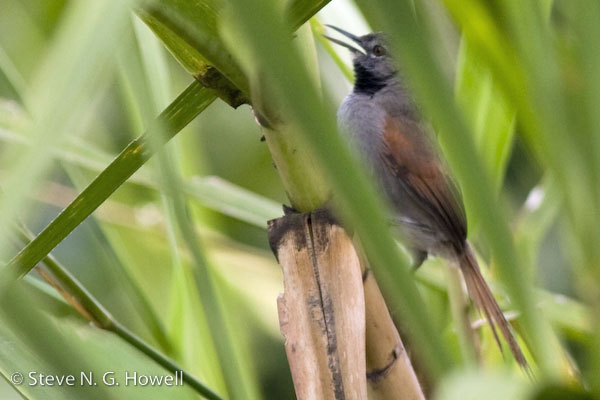
July 22: Steve Howell and Jon Feenstra report on their scouting of a new lodge in Amazonian Ecuador - Part 3
We continue to be amazed at the Napo Wildlife Center in Ecuador’s Amazonian lowlands: “The male Pink-throated Becard is left of the Chestnut-winged Hookbill, above the Red-billed Scythebill. What’s below it..? Oh, juvenile Fulvous Shrike-Tanager being fed by an adult male, and there’s a Wing-barred Piprites below it, near the LaFresnaye’s Piculet. Nice, a Chestnut-shouldered Antwren, above the Spot-winged Antshrike…” And that was just a minute amid one flock in the primary rain forest that surrounds the Napo Wildlife Center lodge (see below, bottom). The deafening whistles of aptly named Screaming Pihas were also notable, plus at least six Black-necked Red-Cotingas (below), wonderful views of the recently described Yasuni Antwren, fresh Tapir and Mountain Lion tracks, four species of monkeys including Red Howlers, and even a group of Gray-winged Trumpeters on the trail. We got back in time for a relaxing afternoon at the cabins, where Hoatzins flop in the trees, and even the vultures aren’t bad – King Vulture (below) soaring over the lodge on our return, and handsome Greater Yellow-headed Vultures (below) sitting in trees behind the bar
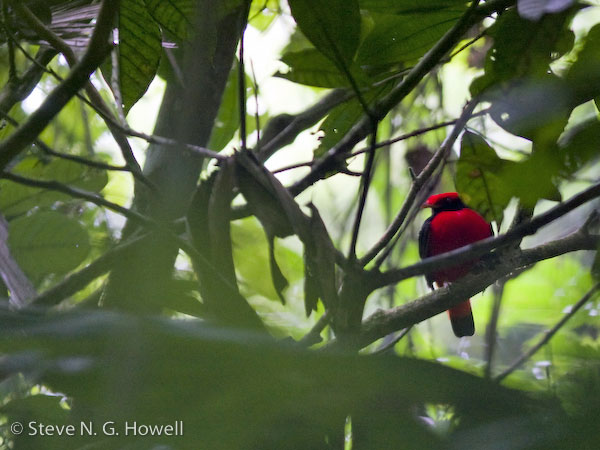
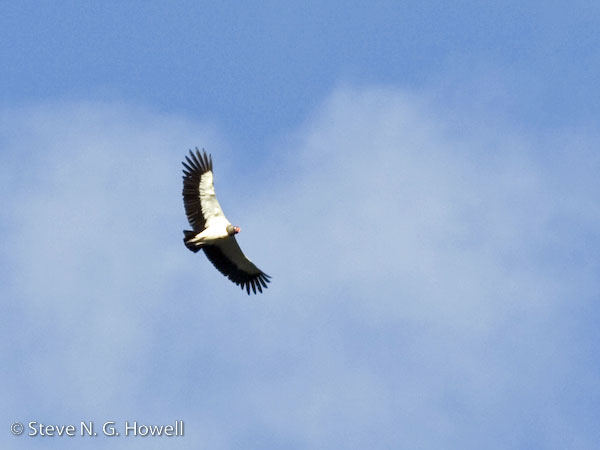
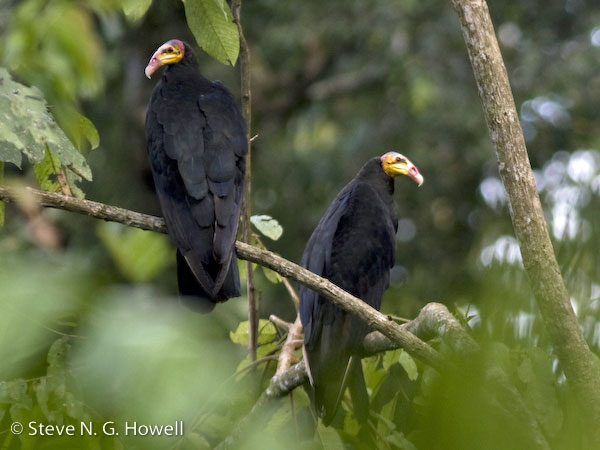
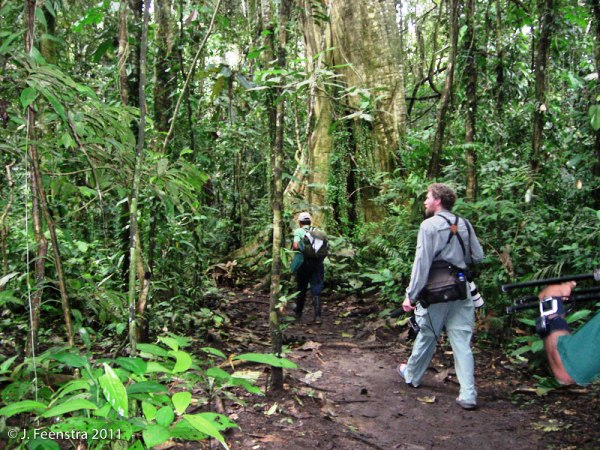
July 21: Steve Howell and Jon Feenstra report on their scouting of a new lodge in Amazonian Ecuador - Part 2
Now that we’ve settled in at the Napo Wildlife Center it’s great to report that this is surely the best wildlife lodge in western Amazonia – incredibly comfortable, great staff, fine food, hot water showers, an amazing canopy tower, well-maintained trails, and, for better or worse, email if “needed”!
Most trails start with a canoe ride from the lodge, and this morning’s adventure began with counter-singing Zigzag Herons (below), an adorable Night Monkey staring out from its roost hole, and a couple of roosting Sungrebes so close we could have touched them! Other highlights of the canoe ride included numerous Rufescent Tiger-Herons (below), Ringed Woodpecker, and great views of Green-and-rufous and Pygmy Kingfishers. The day continued with visits to two clay licks where hundreds if not thousands of parrots come to, well, lick (or more accurately eat) clay. The first lick (below) was packed with Dusky-headed Parakeets plus good numbers of Blue-headed, Yellow-crowned, and Mealy Parrots, while the second (below) held a truly deafening blizzard of perhaps 1000 Cobalt-winged Parakeets, among which we found some handsome Scarlet-shouldered Parrotlets. The canoe ride back, after a delicious picnic lunch in the field, produced great views of Squirrel and Spider Monkeys, a stunning male Salvin’s Curassow (testament to the lack of hunting, which is why there is so much wildlife at the aptly named Napo Wildlife Center). And of course it’s hard to beat the Hoatzin (below) for a strange and wonderful “yard bird” when you get back to the cabins for a cold beer and sunset.”

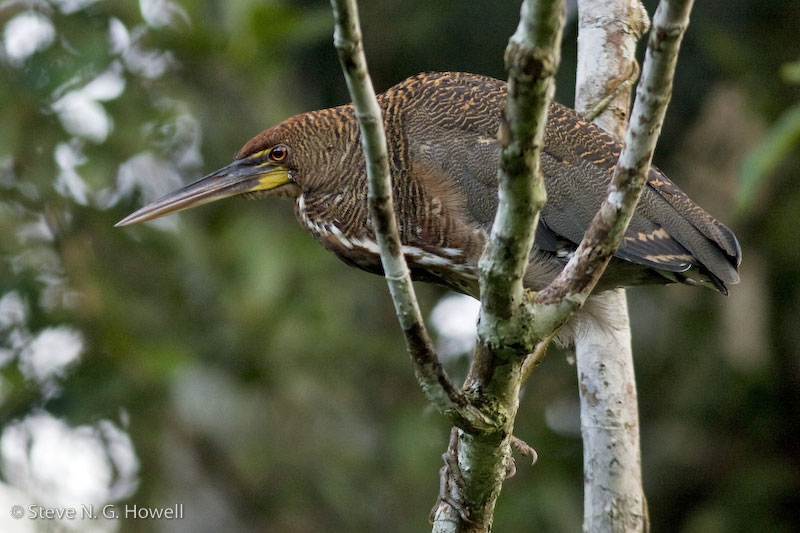
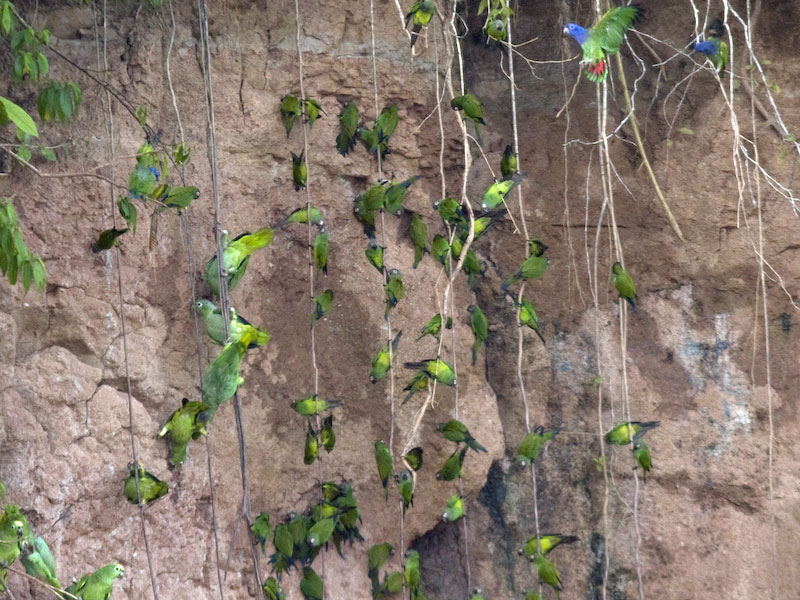
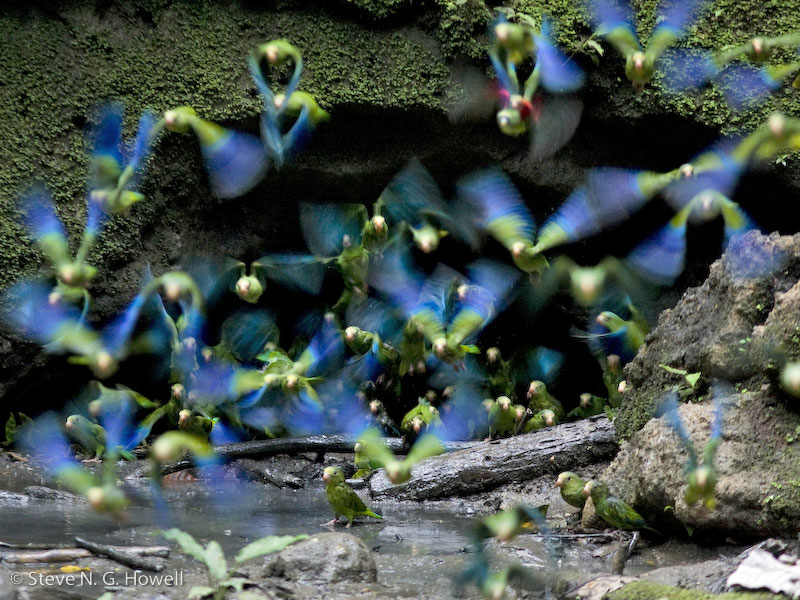
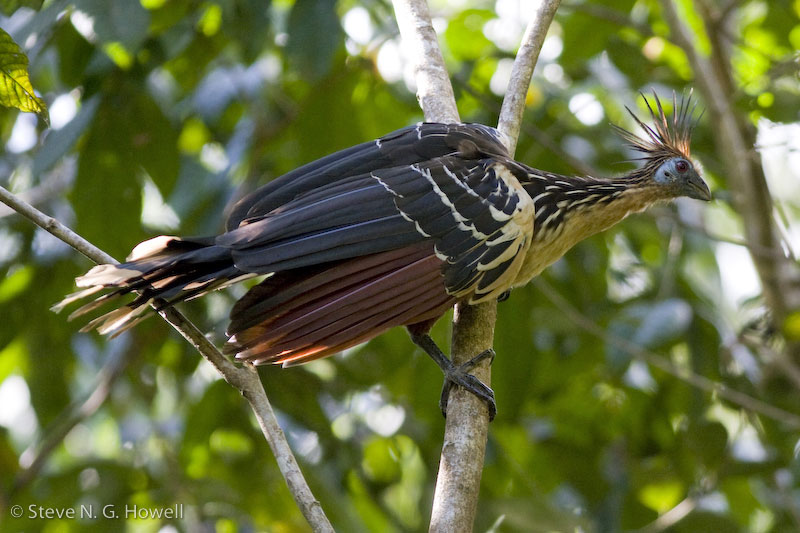
July 21: Rich Hoyer from his Snowcaps to Seaturtles tour of Costa Rica
Today was only our second day of our twelve days of birding, but it's amazing what wonderful things we've already seen, and we're not that far from where we started in San José. Just this morning in the high mountain valley of the Savegre River southeast of the capital we stumbled into a family group of Spotted Wood-Quail, the first I've ever actually seen (though I've heard them on several occasions). This was followed by a flock of adorable Sulphur-winged Parakeets that landed in trees next to where we were standing. Then if being dazzled by the many Green Violetears, Magnificent Hummingbirds, White-throated Mountain-gems, and Volcano Hummingbirds at the lodge feeders weren't enough, we drove a couple miles up the road and spent nearly an hour at "quetzal corner" where we eventually had fantastic views of at least four male and one female Resplendent Quetzals (see below). That was after we worked the mixed flock just 30 yards down the road where a pair of Buffy Tuftedcheeks foraged intently along moss- and bromeliad-covered branches at eye-level and close range.
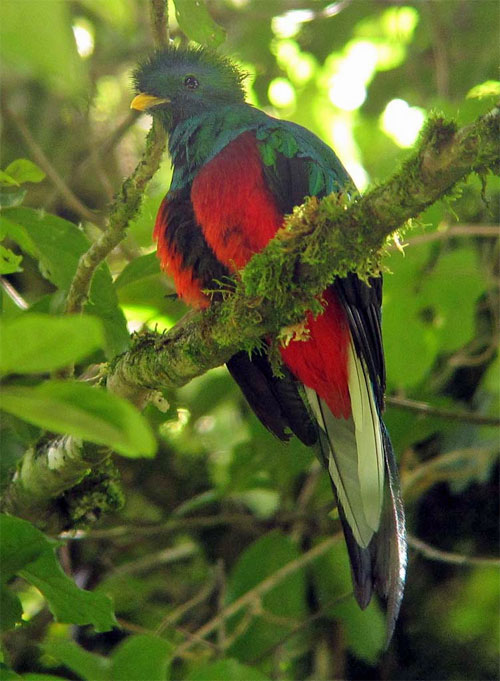
July 20: Steve Howell and Jon Feenstra report on their scouting of a new lodge in Amazonian Ecuador
We spent our first morning of birding at this incredible lodge (below, where Steve will be leading a group in July 2012) on the canopy platform overlooking a world apart from the rest of the forest. From stunning males of two rarely seen hummingbirds, Amethyst Woodstar and Black-bellied Thorntail, to an “express train” of over 100 White-lipped Peccaries snorting and crashing through the understory, this was a morning to remember. From the start we delighted in roaming bands of oropendolas (5 species!), numerous parrots and macaws flying by, the intense eye-burning blue of male Plum-throated and Spangled (below) Cotingas, all with the sounds of tinamous wafting up from the forest floor. Looking down (rather than neck-breakingly up) at a singing Pygmy Antwren was delightful (below), and a nearby White-browed Purpletuft almost “eclipsed” a Horned Screamer perched atop a very distant tree – that is, before the screamer (below) decided to fly straight towards us, with slow, prehistoric-looking flaps, and right past the tower! Squadrons of White-collared Swifts appeared in mid-morning, after their commute from the Andes, a few King Vultures circled around, and we had great views of perched Slate-colored Hawk and Slender-billed Kite. Oh, and did we mention seeing four species of monkeys since we arrived? And then back for a delicious lunch, cold drinks, and a well-earned siesta. Now time to head out for an afternoon canoe ride...
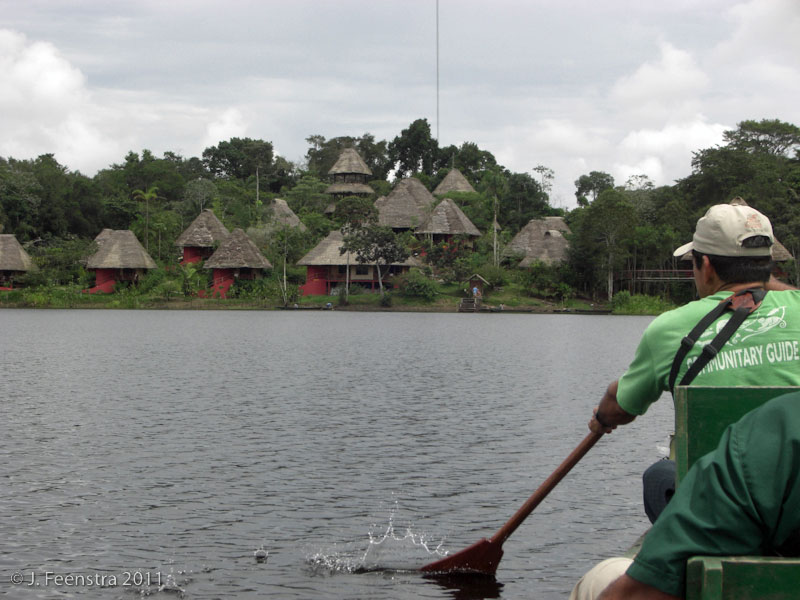
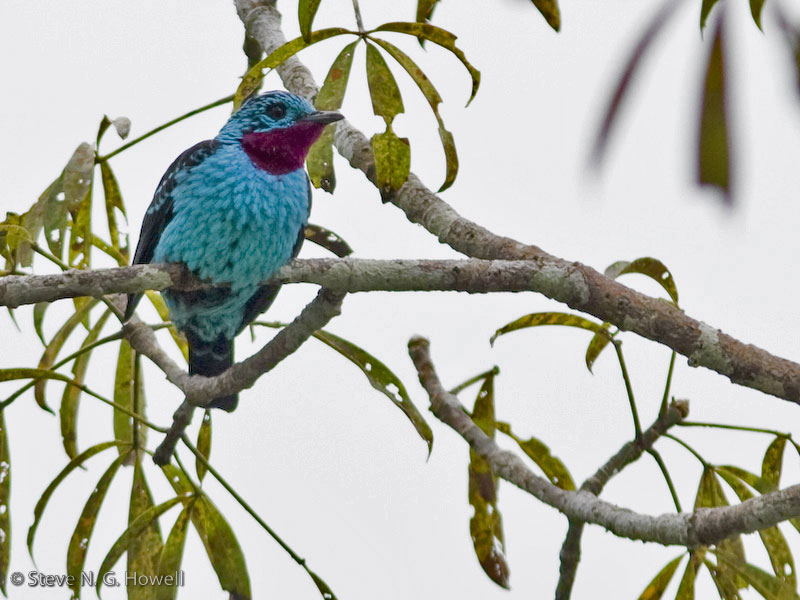
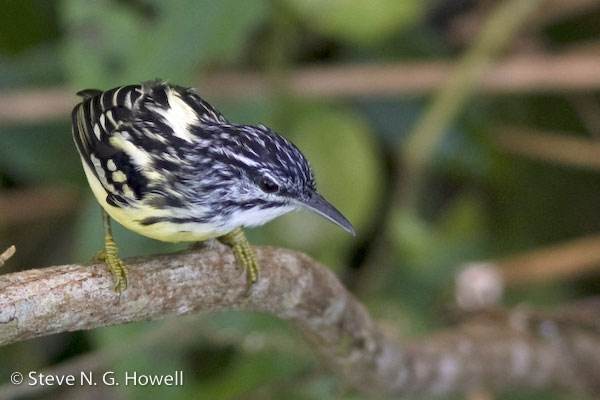
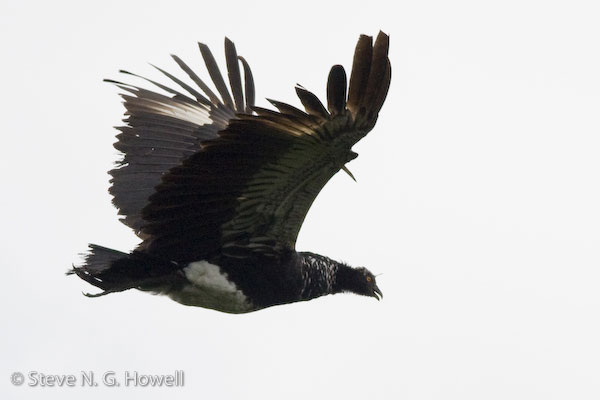
July 12: Steve Howell on his and Rich Hoyer's continuing Peru scout - #2
We found a couple of excellent new sites to incorporate into the northern Peru tour, as well as visiting some time-honored favorites with their own special birds. “Yesterday we watched several Marvelous Spatuletails (below) at the Huembo Reserve, a property bought and managed to protect this incredible hummingbird, an icon of Peru’s northern Andes; we even got to see a nest with two recently hatched young! We also enjoyed great views of the very local Royal Sunangel (male below), while today’s suite of hummingbirds included a stunning male Rufous-crested Coquette (below), feeding and perching within a few feet of us! Other notables in the past few days include a roadside roost of otherworldly Oilbirds, the little-known White-chinned Swift, and good numbers of the local and stunning Huallaga (or Black-bellied) Tanager.”
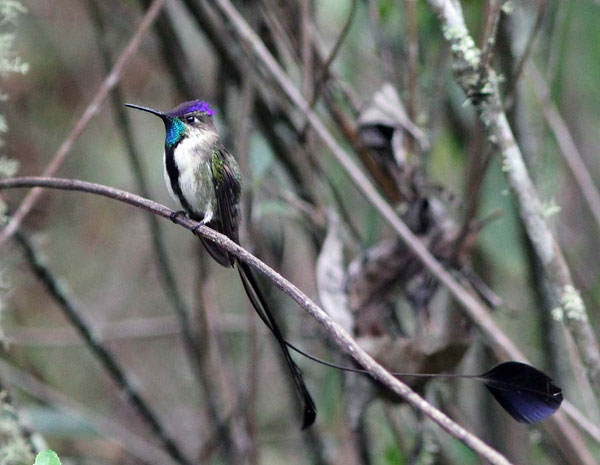
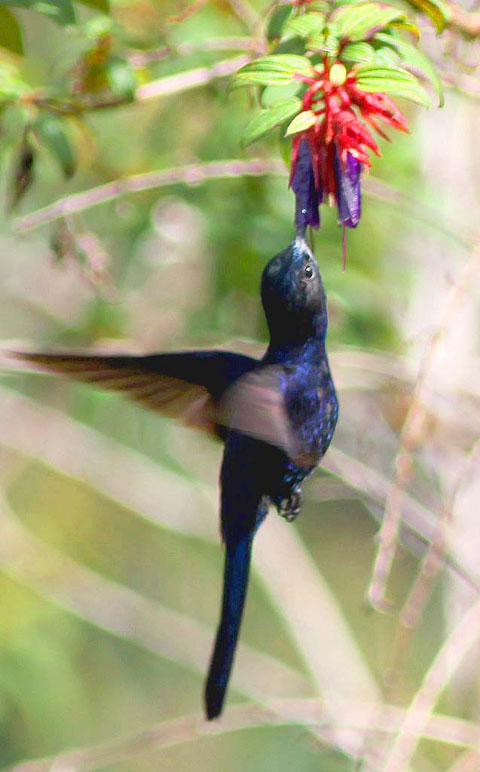
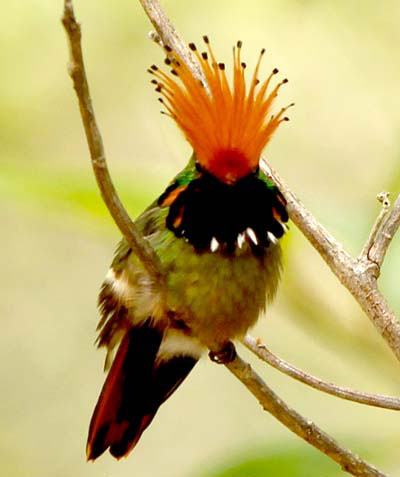
July 12: Steve Howell on his and Rich Hoyer's continuing Peru scout - #1
Watching the enigmatic Long-whiskered Owlet calling, with Stygian Owl and Peruvian Night Monkey as supporting cast, and all under a glowing half-moon and intensely star-pricked sky – what a great way to round out the day. The morning had produced “the usual” selection of great birds (with almost too many colorful tanagers, Yellow-throated, below) and scenery (photo below), as had our drive up from the lowlands. A stunning White-throated Woodpecker (below) at 1150m elevation (when the new field guide says it occurs only up to 850m) was one of many reminders of how much there still is to learn in this mega-biodiverse country. And the new Owlet Lodge is a great place to be based!



July 11: Rich Hoyer from his scouting in Central Peru
For the second half of my week in central Peru I checked out the road that passes through the Satipo River valley, a promising patch of cloud forest with some really great birds. There is no lodge yet located within the cloud forest elevations, but I did spend three nights in the basic lodging operated by the community of Calabaza, as they are in the planning stages of building a lodge more appropriate for tour groups. In the meantime, what they have to offer is perfectly good for those willing to rough it a bit – it's certainly a step above camping to have a bed and a roof – and I can see myself taking small groups organized through WINGS in the form of the many private tours I've done to places like Brazil, Bolivia, Costa Rica, Mexico, and Jamaica. We'd search for some of the more local species such as the adorable Eye-ringed Thistletail (see below), whose range map is a speck. One day would probably be devoted to birding the next valley over in search of more map-specks such as Black-spectacled Brush-Finch and the undescribed species of wren that looks like Plain-tailed but sounds like Inca. In the meantime, the birding is downright fun here – I had four species of chat-tyrants, five species of flowerpiercers, some gorgeous tanagers such as Buff-breasted Mountain-Tanager and Golden-crowned Tanager, as well as some scarce goodies such as White-rumped Hawk (photo below) and Tyrannine Woodcreeper. Steve Howell is next joining me for a week in the far north of Peru, so stay posted for some updates from that totally different part of the country.
